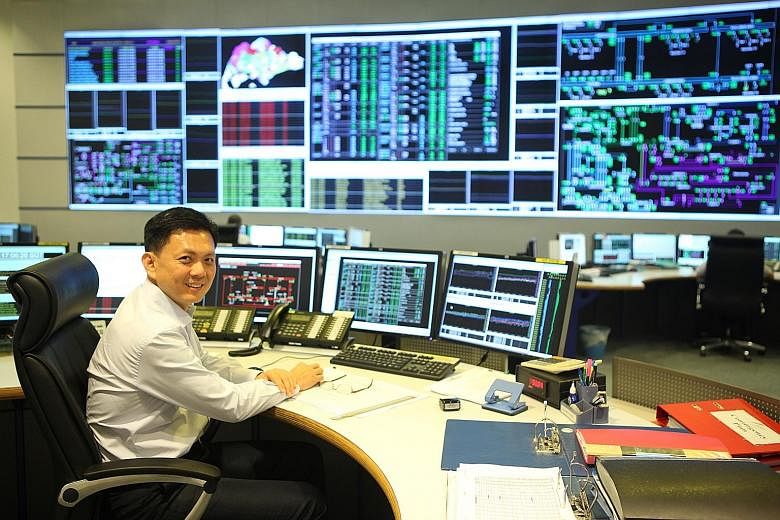Mr Chew Min Lip is used to getting phone calls in wee hours of the morning.
His car is stocked with safety boots, a vest, helmet and torch in case he has to go to the site of a electricity blackout.
Mr Chew, the managing director of electricity operations at national grid operator SP Group, is the man who has to answer to the Government's Energy Market Authority (EMA) if there is an electricity disruption of more than three hours.
But it hardly happens nowadays, according to SP Group, with 98 per cent of outages being restored within two hours.
Sometimes the main challenge is not even replacing the fuse and turning the power back on, said Mr Chew, but getting access to the site to reach the fuse, for example.
"Sometimes we can't access the site as it is in a locked compound or there is an obstruction. Sometimes we have to call the police and wait for them to arrive before we can climb over the fence."
-
What to do in a blackout
-
The Energy Market Authority (EMA) has the following tips should you be stranded without lights:
•Turn off all power switches but leave a couple of lights on so that you know when power is restored. Restoration of supply may lead to momentary surges that can damage appliances like air-conditioners and refrigerators.
•Keep the refrigerator closed. Unopened refrigerators will keep food frozen for several hours.
•If trapped in a lift, stay calm and press the alarm button. Do not attempt to rescue people trapped in lifts. Call the Essential Maintenance Service Unit on the phone number found inside the lift or at the lift landing as they are trained and have the proper equipment.
•If you are driving and the traffic and street lights go off, keep your headlights on and drive slowly. Follow the directions of any police officers at the affected areas. Turn on your car radio for news updates.
•Refer to the SP Group website www.spgroup.com.sg or the EMA website www.ema.gov.sg for updates on supply restoration.
The nerve centre of Singapore's power grid is in two control rooms in a protected facility in Ayer Rajah, which Mr Derrick Lim, 48, control manager of EMA's Power System Operation Division, calls, literally, the "seat of power".
One room is operated by EMA and controls the transmission of high-voltage electricity from power stations to substations, while the other is operated by SP Group and oversees the operation of about 11,000 substations that distribute power around the country.
The rooms are full of computer screens and giant wall-mounted displays showing equipment status updates, supply and demand figures, maps and detailed cable diagrams.
"Here, we remotely monitor the systems around the clock in real time, and arrest any anomaly before it actually becomes a fault," said Mr Chew. "We can remotely control the switches, which makes it much faster than going on site."
In the EMA control room, there is even a solar power map tracking Singapore's solar power output, which fluctuates with cloud cover. Conventional generators supplement this system to maintain stable power generation.
In 2014, Singapore announced it would increase solar power to 350 megawatt-peak - a measure of the power of solar generators - by 2020, about 5 per cent of the country's projected peak electricity demand.
Over the years, improvements have been made to how the electrical grid is connected. While the network in colonial times was based on a radial structure with arms radiating from a central node, the authorities have progressively modified it to a structure containing numerous loops, which offer alternative pathways to deliver electricity should a pathway fail, said Mr Chew.
In the event of a power outage, SP Group said the supply can sometimes be restored within a minute.
A standby team may also be activated, with generators ready to be deployed to the site of the outage to provide temporary power.
If some calamity should befall the control room itself, there is a fully functional backup control room in a separate, undisclosed location.
Professor Aditya Mathur, head of information systems technology and design at the Singapore University of Technology and Design, said Singapore is one of the world's most advanced countries in securing its public utilities. This is critical when power grids are coming under new threats like cyber attacks, which can wreak havoc on networks controlled remotely through the Internet.


